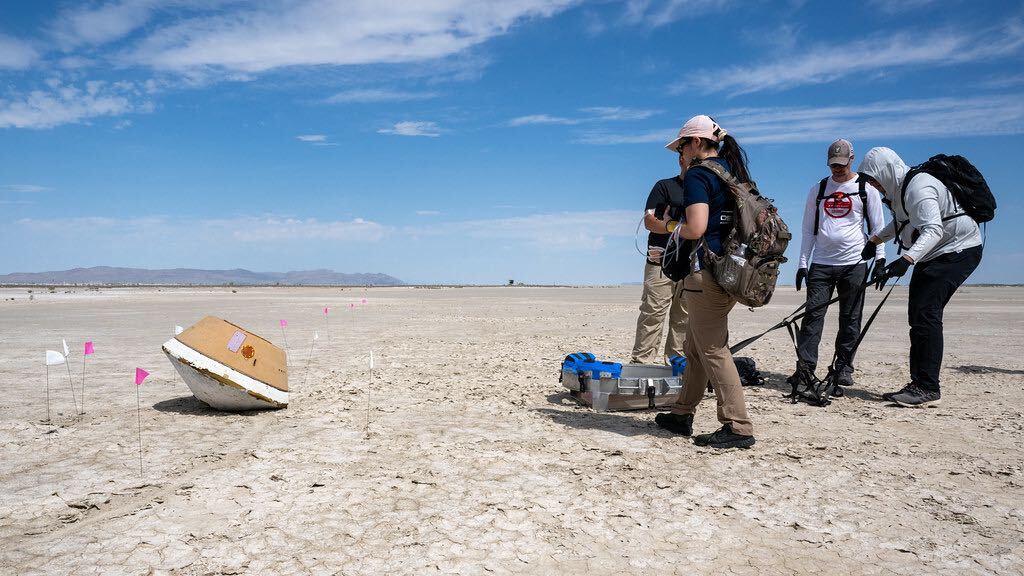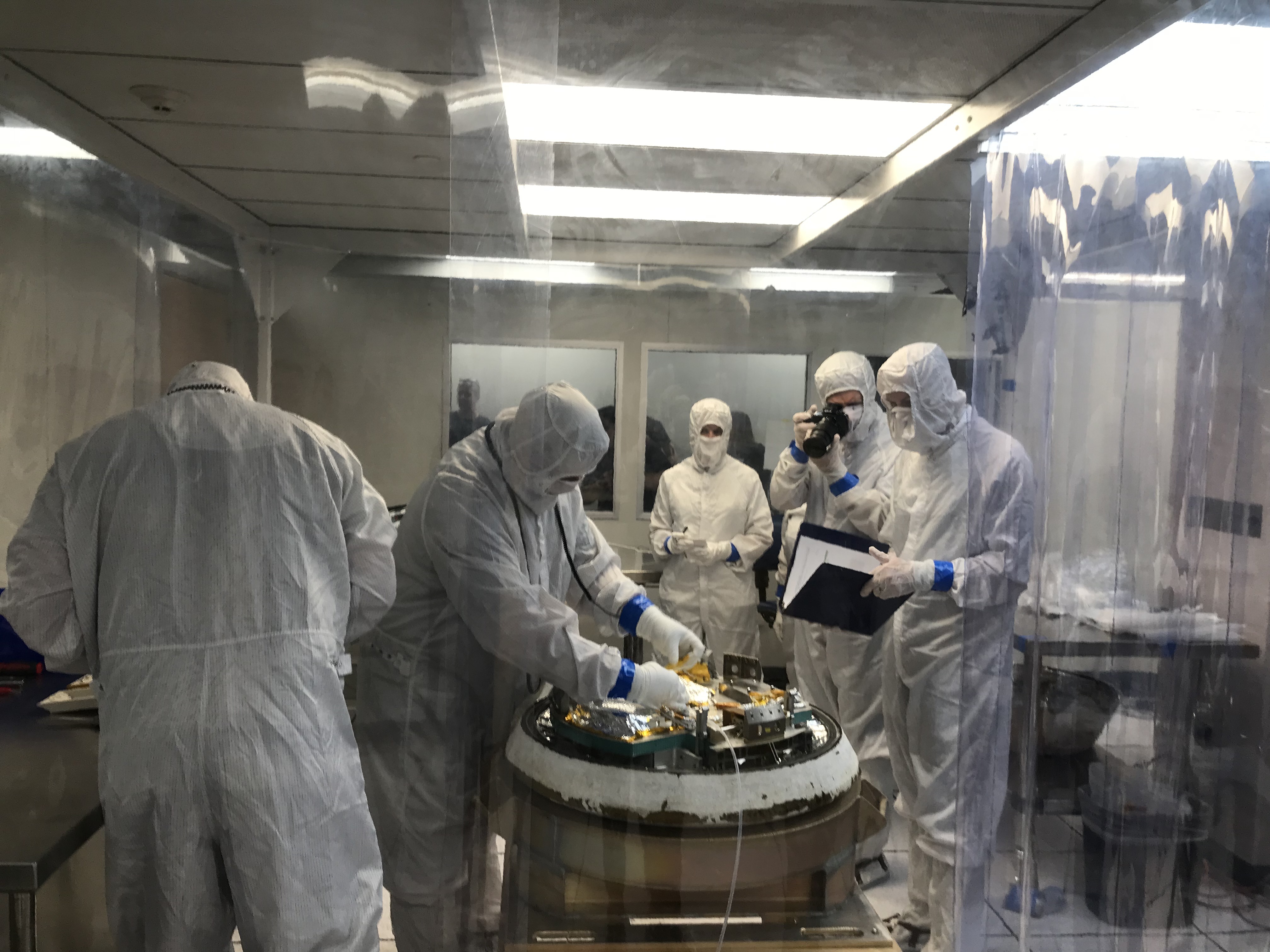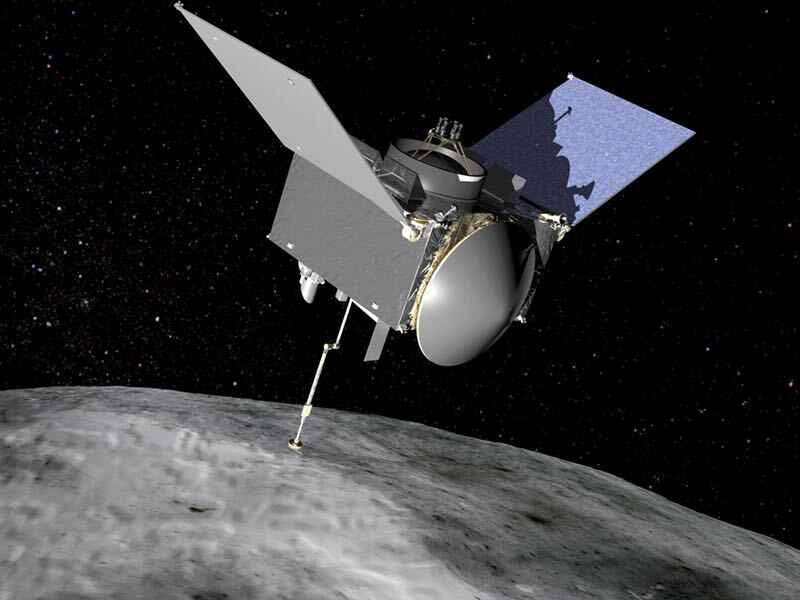OSIRIS-REx's Dante Lauretta shares final preparations for Sept. 24 asteroid-sample return

Extensive practice sessions have been orchestrated to properly handle the container and its asteroid collectibles once the spacecraft is on terra firma.

A NASA spacecraft is nearing Earth in express delivery mode. Indeed, it's a "stone's throw" type of mission — one hauling extraterrestrial freight from a space rock deemed a possible security risk to Earth.
Launched in September 2016, NASA's Origins, Spectral Interpretation, Resource Identification, and Security-Regolith Explorer (OSIRIS-REx) spacecraft is toting a collection of asteroid bits and pieces. They were plucked from asteroid Bennu, an ancient rubble pile of odds and ends from the early days of the solar system's creation about 4.5 billion years ago.
This asteroid has an estimated 1-in-1,750 chance of running into Earth during one of its close approaches in the late 22nd century. Bennu could potentially smack into Earth or collide with Venus, but any "crash-course" predictions are far from precise.
Since May 10, 2021, celestial small stuff from Bennu has been headed our way following its "moving day" departure from the asteroid. On Sept. 24, those deliverables are scheduled to parachute into the Department of Defense's Dugway Proving Ground in the Utah Test and Training Range, roughly 80 miles (139 kilometers) west of Salt Lake City.
Capsule return day is speedily approaching, measured in part by the rising heart rate of OSIRIS-REx's principal investigator, Dante Lauretta, a professor of planetary science and cosmochemistry at the University of Arizona's Lunar and Planetary Laboratory.
Space.com recently caught up with Lauretta in anticipation of the full-stop touchdown of specimens from asteroid Bennu.
Breaking space news, the latest updates on rocket launches, skywatching events and more!
Muscle memory

So how is OSIRIS-REx doing after its seven-year journey? "The spacecraft is very healthy," Lauretta said. "We have a good vehicle."
Extensive practice sessions have been orchestrated to properly handle the container and its asteroid collectibles once the spacecraft is on terra firma. High-fidelity simulations involving step-by-step capsule retrieval and transport to a mock clean room have been staged. Scientists, engineers and others have taken part in a dry run to prepare for the real return of the spacecraft.
"Our procedures have gotten more detailed and refined," Lauretta said. "It's do we like the Teflon scoop or the stainless steel? What about this tape, and do we have the right scissors? It's very down into the nitty-gritty. We want everything scripted."
In practice-makes-perfect mode, recovery teams have gone through procedures for both ideal and unexpected scenarios, like finding the capsule upside down, or in a puddle of water or mushy mud because of Utah desert rainfall.
"When the adrenaline and emotions are running, you just want to have it all as muscle memory," Lauretta said. "We know exactly what we need to do so we get the capsule secured and out of there."
Touch-and-go
Awaiting the capsule's landing, within an ellipse measuring 36 by 8.5 miles (58 by 14 km), helicopters are positioned to fly recovery team members once the capsule's set-down spot is identified. A systems safety officer will inspect the landed capsule, monitor air-quality levels at the site, and ensure the area and capsule are safe and sound for the soon-to-follow entourage of personnel.
The OSIRIS-REx capsule will be picked up by helicopter and delivered to a specially created clean room within the Utah Test and Training Range. "What happens then is disassembling the capsule down to what I care about, the science canister,"' Lauretta said.
The canister holds the Touch-And-Go Sample Acquisition Mechanism (TAGSAM) that carries the prized bonanza of asteroid material. It will be triple bagged and then transported by aircraft to the curation clean room at NASA's Johnson Space Center in Houston.
Guessing game
So how much of asteroid Bennu does TAGSAM hold? It's a bit of a guessing game, "with an asterisk on it," Lauretta said. "We didn't do the sample mass measurement that we had spent a decade designing."
That is, OSIRIS-REx was supposed to help measure moment of inertia ( by sticking its robotic arm out to the side and spinning. By contrasting measurements when TAGSAM was empty and then loaded with samples, the team could estimate the mass of Bennu fragments onboard, Lauretta explained.
But as with many space science missions, things didn't go exactly as planned. "None of that happened, so we didn't get the mass measurement we designed," Lauretta said.
But thanks to a clever guidance-and-navigation team effort by Lockheed Martin Space Systems — which built the air-filter-like TAGSAM, the return capsule and the spacecraft itself — the team estimates that the spacecraft snagged 5.26 to 12.34 ounces (149 to 350 grams) of Bennu.
"So it has a high uncertainty … so that's the reason for the asterisk," Lauretta said.
The OSIRIS-REx mission requirement is 60 grams (2.1 ounces). "Just looking at the TAGSAM, it was full of stuff," Lauretta said. "There was a lot of material packed in there."

The payoff
As principal investigator of an effort two decades in the making, Lauretta will be in position in Utah as part of the recovery team and then fly with the sealed asteroid specimens to the clean room at Johnson Space Center.
"I really want to see that sample," Lauretta said. "It's almost hard to put into words. It has been 20 years" [working on the OSIRIS-REx project]. "When I first signed up, I was a kid, and had no idea what I was signing up for, no idea what's involved in a space mission, getting it built and launched. That's been the hardest part for me, personally. I grew up and grew into the job."
Given all the painstaking prelaunch testing of OSIRIS-REx's hardware and the spacecraft's performance to date, Lauretta said he puts the asteroid-gathering adventure at a 99% chance of mission success.
The payoff is pouring the TAGSAM-carried asteroid material into clean-room trays. In full-study mode, researchers from around the globe will scrutinize the pieces of space rock in the coming years. As to what those samples will disclose, stand by for surprises, Lauretta said. "I'm hoping to get my first paper submitted by December, and that would be the first one out of the gate," he added.
While teams unravel the scientific signals from the Bennu assortment, the OSIRIS-REx mission will continue onward. Once the spacecraft releases its Utah-bound sample capsule above Earth's atmosphere, it will fire its engines to divert the probe's path away from Earth and start its next assignment under a new name, OSIRIS-Apophis Explorer, which will investigate asteroid Apophis in 2029.
For that extended trek to Apophis, Lauretta is relinquishing his OSIRIS-REx principal investigator role. He is sticking with the Bennu samples, he said, and getting back to basics, "which is kind of what my goal was in the early days … just to be a lab scientist."

Leonard David is an award-winning space journalist who has been reporting on space activities for more than 50 years. Currently writing as Space.com's Space Insider Columnist among his other projects, Leonard has authored numerous books on space exploration, Mars missions and more, with his latest being "Moon Rush: The New Space Race" published in 2019 by National Geographic. He also wrote "Mars: Our Future on the Red Planet" released in 2016 by National Geographic. Leonard has served as a correspondent for SpaceNews, Scientific American and Aerospace America for the AIAA. He has received many awards, including the first Ordway Award for Sustained Excellence in Spaceflight History in 2015 at the AAS Wernher von Braun Memorial Symposium. You can find out Leonard's latest project at his website and on Twitter.


